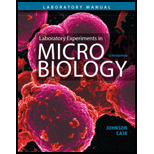
To analyze:
The reason for development of system for the identification of Enterobacteriaceae.
Introduction:
Enterobacteriaceae is a large family that belongs to basically gram-negative bacteria. The members of this family are generally Enterobacter, Klebsiella, Salmonella, Shigella, E.coli, Proteus, and Serratia. These bacteria are found in human gut, skin, soil, sand, and diary products.
Explanation of Solution
Bacteria are generally divided into two categories, gram-negative and gram-positive bacteria. The gram-negative bacteria are further divided into enterics and non-fermenters. From a long time, various substrates were being used to differentiate between non-fermenters and enterics. Both these groups are responsible for the cause of various bacterial infections in the human population. Therefore, it was important to develop a system that would help in identifying the members of Enterobacteriaceae.
The reason for development of system for the identification of Enterobacteriaceae is tp handle the diseases in humans caused by them.
Want to see more full solutions like this?
Chapter 51 Solutions
Laboratory Experiments in Microbiology (12th Edition) (What's New in Microbiology)
- 22. Which of the following mutant proteins is expected to have a dominant negative effect when over- expressed in normal cells? a. mutant PI3-kinase that lacks the SH2 domain but retains the kinase function b. mutant Grb2 protein that cannot bind to RTK c. mutant RTK that lacks the extracellular domain d. mutant PDK that has the PH domain but lost the kinase function e. all of the abovearrow_forwardWhat is the label ?arrow_forwardCan you described the image? Can you explain the question as well their answer and how to get to an answer to an problem like this?arrow_forward
- Describe the principle of homeostasis.arrow_forwardExplain how the hormones of the glands listed below travel around the body to target organs and tissues : Pituitary gland Hypothalamus Thyroid Parathyroid Adrenal Pineal Pancreas(islets of langerhans) Gonads (testes and ovaries) Placentaarrow_forwardWhat are the functions of the hormones produced in the glands listed below: Pituitary gland Hypothalamus Thyroid Parathyroid Adrenal Pineal Pancreas(islets of langerhans) Gonads (testes and ovaries) Placentaarrow_forward
 Principles Of Radiographic Imaging: An Art And A ...Health & NutritionISBN:9781337711067Author:Richard R. Carlton, Arlene M. Adler, Vesna BalacPublisher:Cengage Learning
Principles Of Radiographic Imaging: An Art And A ...Health & NutritionISBN:9781337711067Author:Richard R. Carlton, Arlene M. Adler, Vesna BalacPublisher:Cengage Learning- Essentials of Pharmacology for Health ProfessionsNursingISBN:9781305441620Author:WOODROWPublisher:Cengage





